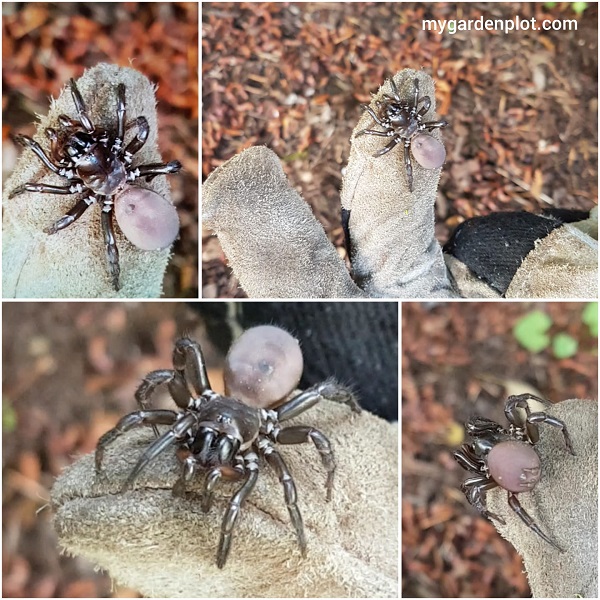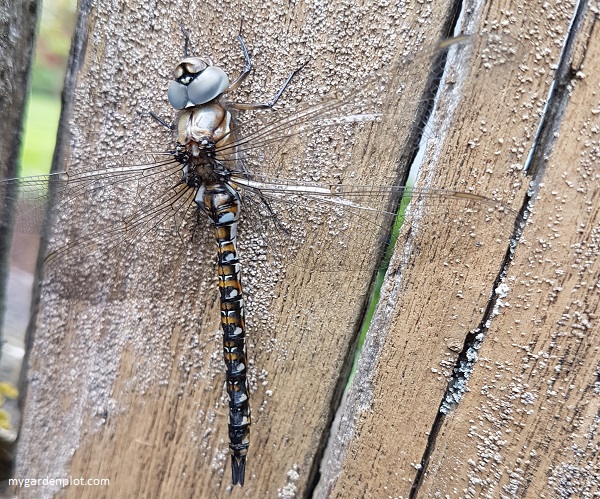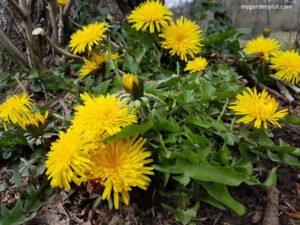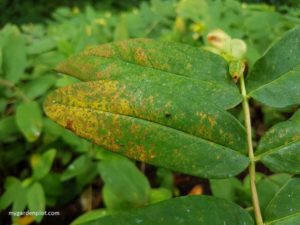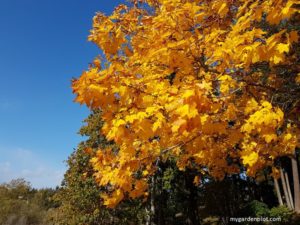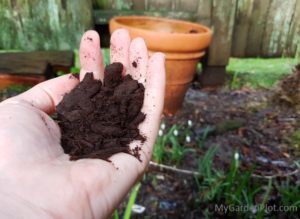Soil Pests. Plant Bugs. Or Beneficial Insects?
Have you ever found a bug in your garden and wondered whether it is a friend or foe? Which are the good and bad bugs in the garden? While several of our common bugs are found in gardens around the world, some of the ones listed here may be more prevalent in the Pacific Northwest.
Remember there are many insects that are beneficial for the garden and help gardeners reduce the use of pesticides. However, you certainly need to know which ones are not your friend. This list will continue to grow as we photograph the good and bad bugs found in the garden, and those that are truly pests and beneficial insects.Check out at the bottom the awesome Pacific Folding Door Spider we found in the garden. Scary looking but beneficial in the garden.
Aphids
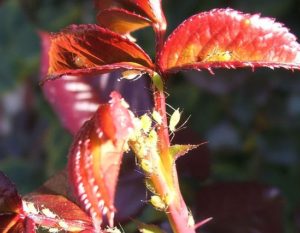
Aphids can damage plants. Thankfully various predators, including ladybugs and lacewings, that feed off aphids. Do attract these predators to your garden. Ladybugs can sometimes be purchased in the garden store in late spring. While some may fly away to your neighbour’s yard, it is worth the investment if you have plants that are susceptible to aphids. Spraying aphids with insecticidal soap is also an effective method in controlling these pests. There are also more potent chemicals available in the garden store if needed when other methods have failed. There are various types of aphids and in multiple colours.
Bees
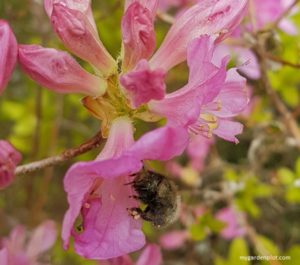
Bees are very beneficial to gardens. They are efficient pollinators that help plants and enrich our gardens. Please support bees by planting bee-friendly plants to bring them to your garden.
We are thankful to have a healthy colony of mason bees in our garden. They are not honey bees but solitary bees that are rather docile and highly efficient in pollinating. They emerge early spring and straight away get to work pollinating the first spring blossoms. They typically only live for about six weeks.
Centipedes
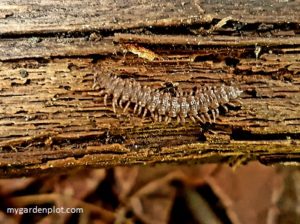
Centipedes are good bugs to have in your garden. They come out at night and eat soil pests and their eggs. They are fast movers and prefer damp shelter under stones and pots. Unlike large tropical centipedes, which are venomous and can give a painful bite, the small ones here in BC are rather tame in comparison. However, I would advise against holding them as they do use venom to subdue their prey. These predators will be beneficial to your garden.
Cutworms
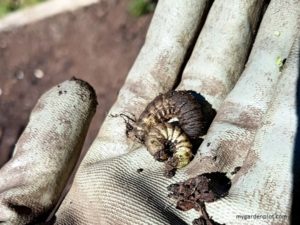
Cutworms are caterpillars (or larvae) of different types of moths. They are destructive. These pests feed on the stems and leaves of seedlings and young plants. They also will feed on roots. There are various natural predators to keep cutworms in check, such as ground beetles. However, if you have an infestation, you will need additional help. Beneficial nematodes are an excellent biological control method that can be purchased at your garden store. Also available is BtK (bacillus thuringiensis serotype kurstaki), which is a biological insecticide. This solution works well by spraying, but it is subject that the cutworms ingest it. These cutworms pictured here I literally picked out of the soil when I was weeding. They are gross (I could not hold them without wearing my gardening gloves!).
Dragonflies
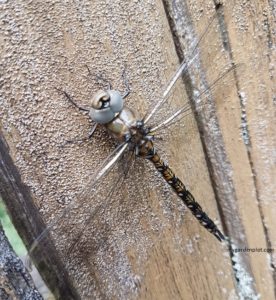
RELATED TOPIC:
Deer: Not a bug per se but these beautiful creatures can certainly be a pest. If your area is known to have deer roam, you will need to consider this in your landscape design and garden plans. Finding ways to deter them and investing in deer-resistant plants will need to be explored.
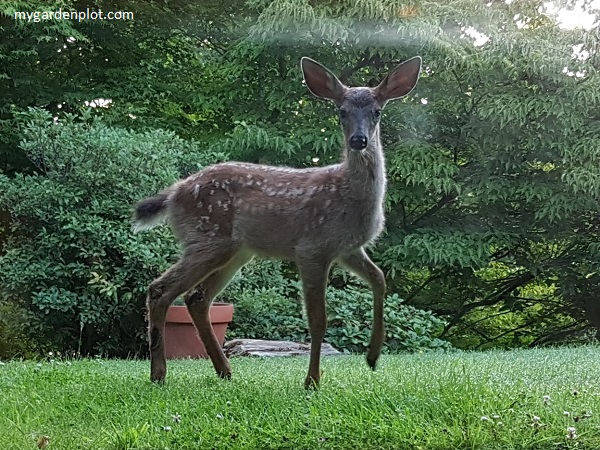
Earthworms and Red Worms
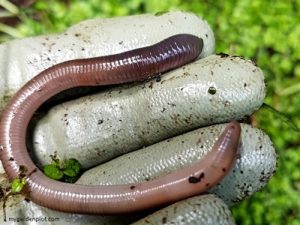
Earwigs
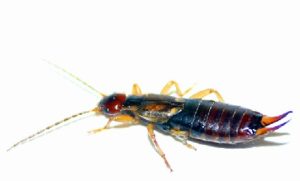
Ground Beetles
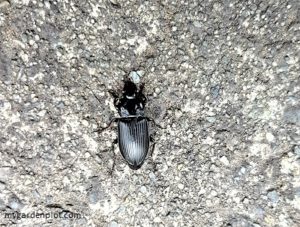
Ground beetles are great for your garden. To garden pests, they are the predator that terrorizes and devours them. They will eat anything that moves, including our friendly earthworms unforunately. Keep these as a natural control for the harmful insects in your flower and vegetable beds. Pictured here is the Big Dingy Ground Beetle that is found in many areas of southern BC. It can measure up to 13 mm and looks rather creepy, but it is one of the good bugs.
Lacewings
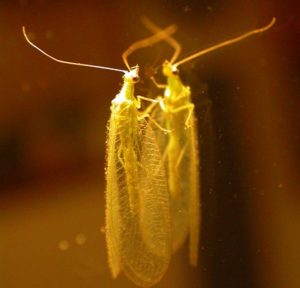
Lacewings are very beneficial bugs for your garden. Like ladybugs, these small flying insects and their larvae are voracious predators of aphids in particular. They will also feed on mites and other smaller pests.
Ladybugs
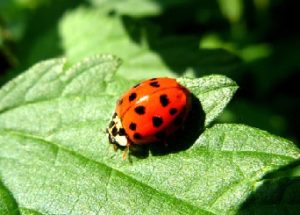
We all love ladybugs! One the most beloved bugs and valued garden dwellers. Ladybugs may have a cute appearance, but they are ferocious feeding on pests such as mites and aphids.
Leafhoppers
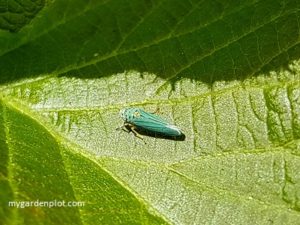
Sap-feeding pests like a leafhopper can cause a lot of damage to a plant. They are tiny and fascinating looking insects but destructive. As they feed, they inject a toxin into the plant, causing further damage. This can also transmit diseases into the plant. They have natural garden predators, such as ladybugs, lacewings, and spiders. However, where possible, spray with dormant oil in winter. The leafhoppers overwinter on perennial plants and fruit trees. Other control methods include applying insecticidal soap, diatomaceous earth, or biological insecticide purchased from the garden store.
Millipedes
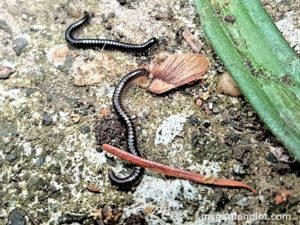
Pillbugs and Sowbugs
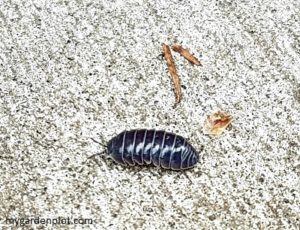
Pillbugs are sometimes confused with sowbugs. They are also referred to as woodlice, and as such, can often be found in compost piles, logs and under plant pots. The easiest way to tell the difference is how they shield themselves when in danger. Pillbugs roll up into a ball. Sowbugs do not. Though they are similar in most of their other habits, which is both good and bad. They both feed on decaying animal and plant matter in the soil, which is good. However, they can damage seedlings. If you have seedlings or young plants, control against these bugs may be prudent. The easiest way to trap them is to provide old damp boards or pots to shelter during the day. Then simply collect and remove or kill them.
Slugs and Snails
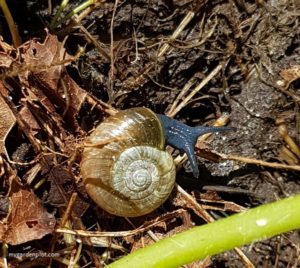
One of the first troubles we learn about. Slugs and snails can cause enormous damage to plants and vegetables. You will notice holes in leaves and stems that they leave in their wake. There are several easy ways to get rid of slugs and snails. There are environmentally-friendly slug and snail pellets or diatomaceous earth available at the garden store. Or create a trap with beer in it to entice them into the trap – even stale beer works. Slug’s natural enemies include predatory ground beetles and toads. Copper strips can also provide an effective barrier around tree trunks or raised vegetable beds. A tad more expensive than the other methods.
Spiders
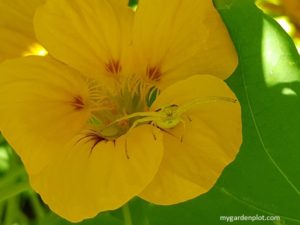
Spiders reign in the predator field, regulating insects in the garden and controlling pest populations. Of course, some spiders, such as the Goldenrod Crab Spider (Misumena vatia), also feeds on beneficial insects – not sure they see good and bad bugs the same way we do. The Goldenrod Crab Spider blends perfectly within a flower (see photo here) waiting for an insect to then feast on. Which is great, but sometimes it’s a bee. But that’s nature taking its course. All in all, spiders are good to have in the garden. The elusive and incredibly cool, Pacific Folding Door Spider (Antrodiaetus pacificus) is one that we seldom see but is very beneficial feeding on pests such as earwigs. Pacific Folding Door Spiders are native to the Pacific Northwest (see photo below).
